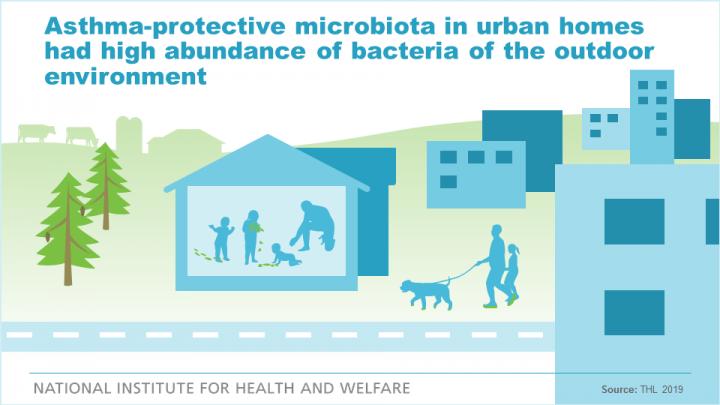
Credit: National Institute for Health and Welfare
Earlier research has shown that growing up on a farm with animals may as much as half the risk of asthma and allergies. The protective effect is thought to be attributable to the diverse microbial exposures encountered on farms.
“We now discovered that the presence of farm-like microbiota in an early-life home seemed to protect from asthma also in urban homes. The effect was not based on the presence of large number of different microbial species but rather differences in the relative abundance of certain bacterial groups,” says Pirkka Kirjavainen, Senior Researcher at the Finnish National Institute for Health and Welfare.
Wearing outdoor shoes indoors, the number of siblings and the age of the house played a role
The study found that the microbiota in homes protecting from asthma contained a wealth of bacteria typical of the outdoor environment, including bacteria in soil. On the other hand, the proportion of microbes normally occurring in the human respiratory tract and associated with respiratory tract infections was small.
“The key characteristic of microbiota in homes protecting from asthma appears to be large abundance of bacteria which originate from the outdoor environment and are beneficial or harmless to health, relative to bacteria that are a potential threat to health,” Kirjavainen comments.
In urban homes, factors that increased the farm-like features in the microbiota included wearing outdoor shoes indoors, the number of siblings and the age of the house; all factors that may increase transport of outdoor microbes into the home.
Asthma is the most common chronic disease in children in Finland – can new cases be prevented in the future?
“It is interesting to see how clear of a protective effect indoor microbiota can have against the development of asthma. In contrast, it has been considerably more difficult to identify microbiota that would explain the detrimental effect of moisture damage on asthma,” says Professor Juha Pekkanen.
Asthma is the most common chronic disease in children in Finland as well as in many other countries, and its prevalence is increasing with urbanisation. The new study supports the view that children’s early exposure to ‘right cocktail’ of microbes may help their bodies to develop mechanisms protecting from asthma.
“The results suggest that asthma could be prevented in the future by modifying children’s early microbial exposures,” says Pekkanen.
###
Media Contact
Pirkka Kirjavainen
[email protected]
Original Source
https:/
Related Journal Article
http://dx.




